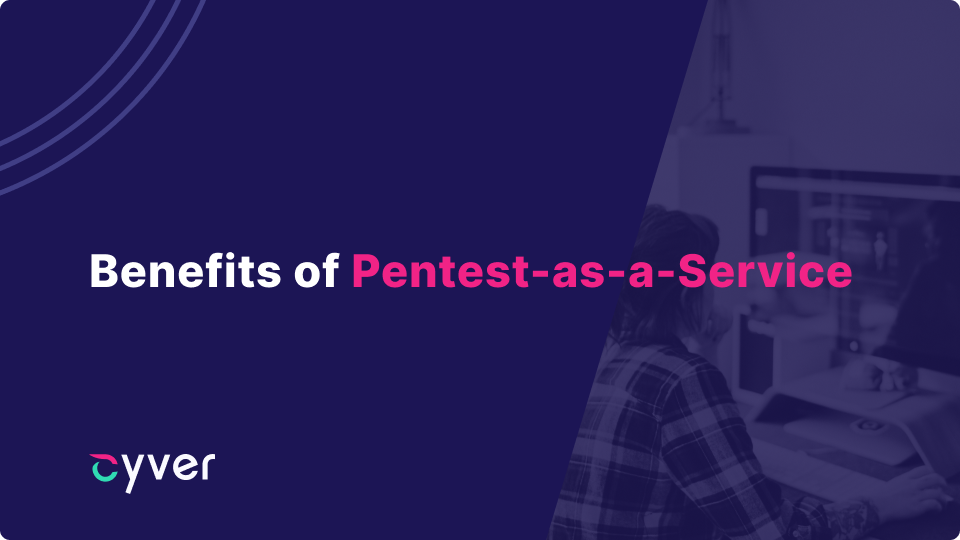As proactive cybersecurity measures become more and more important, businesses are increasingly looking to pentest-as-a-service. If you’re just looking into pentest-as-a-service, you probably want to know why you’d want it over “standard” pentesting, what the differences are, and how your organization can benefit.
Pentest-as-a-Service is an increasingly popular pentest delivery model. Here, organizations like Cyver work to deliver ongoing pentests over time, where we test and retest the same assets. Building a relationship means you get on-demand testing, can map pentests to your development cycles, and integration into your vulnerability management. Unlike with traditional pentesting, which is normally once-off and done, pentest-as-service is designed around building ongoing cybersecurity so your organization stays secure.
A Remediation First Approach
Pentest-as-a-Service platforms like Cyver focus on enabling vulnerability remediation. Some of the ways we do that include delivering findings as “tickets”. Here, you receive a ticket per vulnerability we find. This ticket includes data, instances across your assets, pentester notes, information about the finding, criticality rating and CVSS, and proof of the finding.
Your developers, engineers, and IT experts can then immediately see and act on those tickets. In addition, our Jira connection means you can export every ticket to the platform you manage work in. Cyver also adds to that with alerts in case time to fix exceeds recommended timelines. In addition, you can set up alerts for stakeholders, so relevant people always see when new vulnerabilities are added to the platform.
On-Demand Pentesting
Cyver uses pentest project templates and saves scope details for every project. This means that when you want to retest the same assets, you can request a new pentest with the click of a button. When that happens, we’ll look at the request, check your requested timelines, and fit it into the schedule. Afterwards, we’ll schedule a call to ensure scope, sensitive data like passwords, and other details are still accurate. With no lengthy scoping calls, no need to research and find a new pentester, and no need to reintroduce the project to us, we’ll be able to pentest your assets much more quickly than with a traditional model.
Ongoing Vulnerability Management and Documentation
When Cyver uploads vulnerability findings to your Cyver portal, those vulnerabilities stay in your portal. That includes ongoing vulnerability management for open vulnerabilities. Stakeholders can log in to see open vulnerabilities ordered by asset, criticality, and time the vulnerability has been open. In addition, once devs mark vulnerabilities as remediated, you can continue to see the vulnerability, if it occurs again, and if it passes a retest.
Those ongoing metrics mean that you can use your pentest-as-a-service portal to moderate data like type of vulnerabilities, scope of vulnerabilities, affected assets, and time to fix. That can tie into everything from building and prioritizing backlogs to setting budgets and planning pentests.
Integration with Devs and Engineers
Pentest-as-a-Service platforms like Cyver integrate developer, compliance, and IT teams. Once you onboard your people, they can interact with projects they’re added to. In addition, they can automatically receive notifications when new vulnerabilities are uploaded.
In addition, with comments per vulnerability finding, your devs and engineers can ask questions and discuss the vulnerability with the pentester who found it. This can improve time-to-fix and can ensure that devs have insight into what’s actually going wrong.
In addition, pentest-as-a-service is designed around fitting into Agile sprints. With on-demand pentesting, devs can align pentests with delivery cycles – ensuring that new releases are checked and stay secure. Plus, with integrated communication, pentesting and security become less about creating a bottleneck for the dev team and more about an ongoing process of collaboration and improvement.
Better Integration into Compliance
Cyver integrates retesting into every pentest. This means that when your devs remediate a vulnerability they can request a retest. If you do so within the first 30 days, we do the check for free. Then, if the vulnerability is actually fixed, we update the status in your portal. This allows you to generate a “clean” pentest report for compliance and audits, reducing the time to resolve the audit.
Eventually, pentest-as-a-service is designed to help you integrate pentesting into your ongoing development and cybersecurity cycles. With findings-as-tickets, integrated communication, and the option for developers to choose when to test and when to retest, it moves the focus of pentesting towards remediation. If you’d like to know more, contact us or schedule a call.
